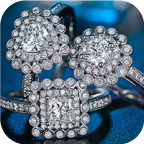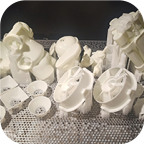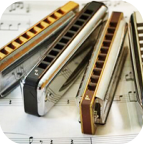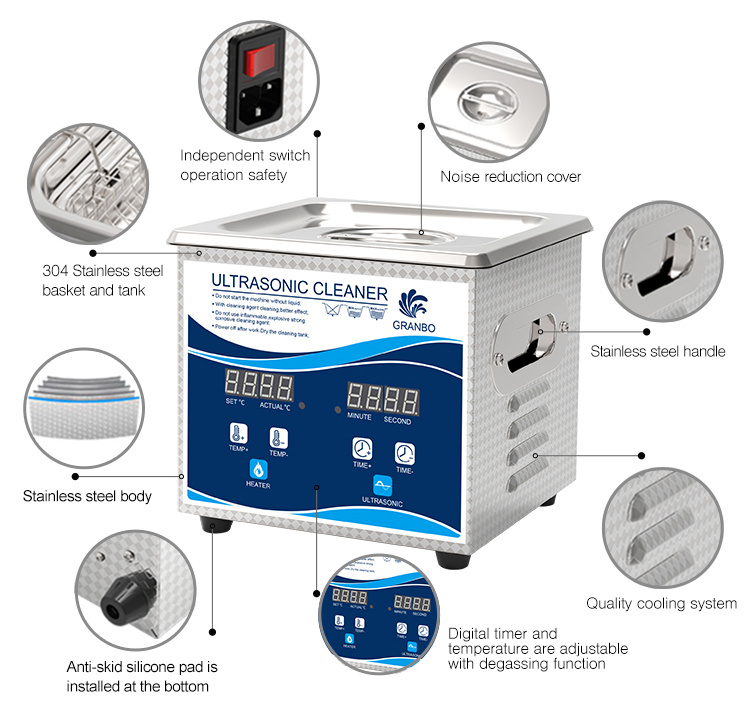Using Ultrasonic Cleaners for Jewelry Care
Browse Volume:83 Classify:Support
Jewelry is designed to shine. Diamonds, gemstones, and polished metals capture and reflect light in a way that attracts attention and carries meaning. Rings, necklaces, bracelets, and earrings often symbolize special milestones and memories. Over time, however, even the most carefully stored jewelry begins to lose its brilliance.
Everyday life introduces countless contaminants. Natural skin oils form a thin film that clings to gemstones and precious metals. Lotions, perfumes, and makeup leave residues that dull sparkle. Even simple dust and exposure to environmental pollutants play their part. For rings in particular, soap scum from handwashing often accumulates behind stones, creating a cloudy look.
Wiping jewelry with a cloth may restore some shine, but it rarely removes debris from hidden crevices or beneath prongs. Traditional brushing with soapy water helps but risks scratching delicate settings. As a result, jewelry owners seek cleaning methods that go beyond surface polish and restore true brilliance.
This is where ultrasonic cleaning stands out. By using sound waves instead of scrubbing, ultrasonic cleaners offer a modern solution to an age-old problem.
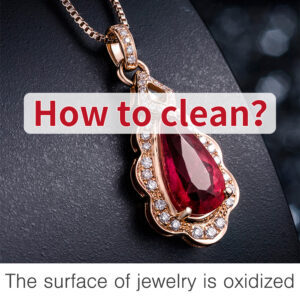
How to clean the jewelry
The Science Behind Ultrasonic Cleaning
At the heart of ultrasonic cleaning is a process called cavitation. When high-frequency sound waves travel through a liquid, they create microscopic bubbles that rapidly form and collapse. Each collapse releases energy in the form of tiny shockwaves. While invisible to the naked eye, these shockwaves are strong enough to dislodge dirt and grime from surfaces.
Jewelry benefits greatly from this effect. Stones cut with multiple facets, intricate filigree designs, and tight settings all present areas that manual brushing cannot reach. Cavitation bubbles penetrate into these spaces, loosening oils and debris without scratching or abrading the surfaces.
Ultrasonic cleaners typically operate between 20 and 80 kilohertz. For jewelry, around 40 kilohertz is standard, producing bubbles small enough for delicate surfaces but still powerful enough to clean effectively. What makes this method so appealing is the balance between gentleness and efficiency: a thorough cleaning in just a few minutes, with no harsh scrubbing required.
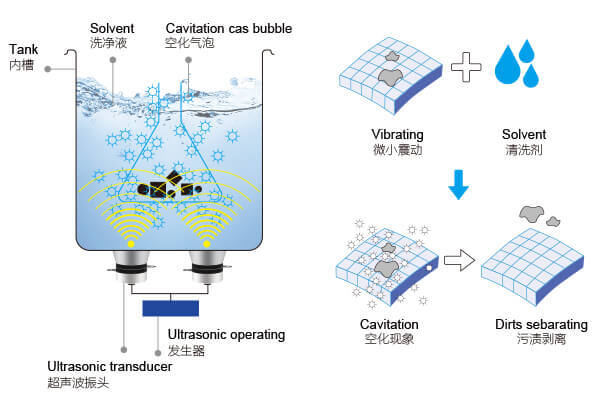
The Principle Behind Ultrasonic Cleaning
Types of Jewelry Suitable for Ultrasonic Cleaning
Not every piece of jewelry is the same, and ultrasonic cleaning works best with certain materials and stones. Hard gemstones like diamonds, sapphires, and rubies respond very well to ultrasonic cleaning. Their durability allows them to withstand vibrations without risk of damage, while the process restores their brilliance by removing even microscopic residues.
Precious metals such as gold, platinum, and sterling silver are also excellent candidates. The ultrasonic bath removes tarnish and oils that dull the shine of these metals. Intricate chain necklaces and rings with detailed engravings particularly benefit, as cavitation reaches into spaces that a brush or cloth could never touch.
For jewelry owners who wear their pieces daily, ultrasonic cleaning provides a reliable way to maintain sparkle between professional inspections. It is especially helpful for engagement rings, wedding bands, and heirloom items that are worn often and exposed to constant environmental factors.
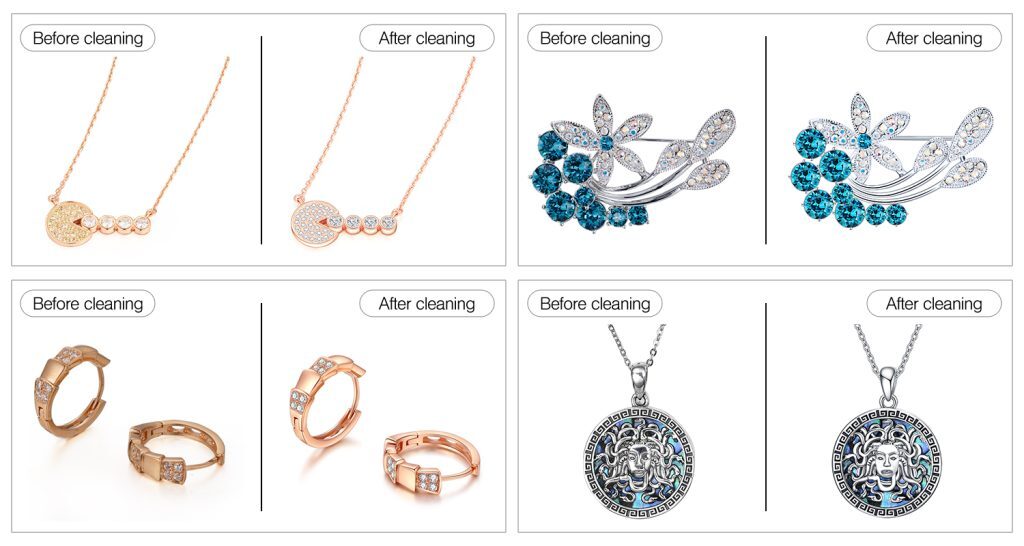
granbo ultrasonic Jewelry Cleaning effect
Jewelry That Requires Caution or Avoidance
While ultrasonic cleaning is highly effective, certain types of jewelry require special care. Soft or porous gemstones such as pearls, opals, turquoise, and amber should not go into an ultrasonic bath. These stones are more fragile and can be damaged by vibrations or by absorbing cleaning solution. Emeralds also require caution, particularly if they are fracture-filled or treated to enhance clarity.
Vintage pieces or jewelry with delicate prong settings may also be at risk. Vibrations can loosen already weakened prongs, increasing the chance of losing a stone. Jewelry that contains glued elements, such as costume pieces or watches with adhesives, should also be avoided because ultrasonic waves can weaken or dissolve adhesives.
Fracture-filled diamonds or laser-drilled stones deserve special mention. These treatments improve appearance but reduce structural stability. Ultrasonic cleaning can enlarge fractures or cause fillers to leak, permanently damaging the stone. Professional organizations such as the Gemological Institute of America (GIA) caution strongly against cleaning treated diamonds in ultrasonic devices.
For safe cleaning, always verify whether your jewelry is untreated and structurally sound. A jeweler’s inspection before ultrasonic use can prevent costly mistakes.
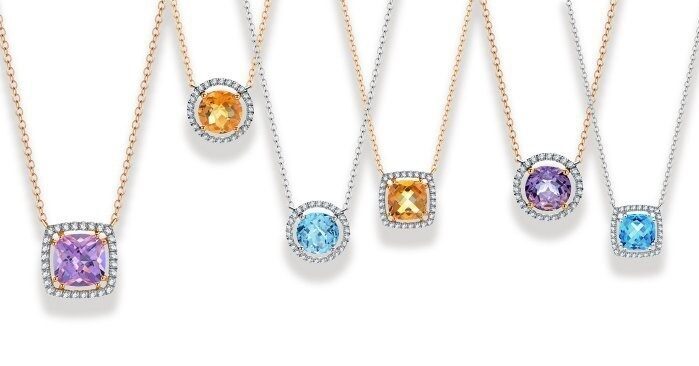
Jewelry Cleaning
Preparing the Ultrasonic Cleaner for Jewelry Use
The effectiveness of ultrasonic cleaning depends not only on the machine but also on preparation. A correctly prepared ultrasonic bath maximizes cleaning results while protecting jewelry from unnecessary risk.
The first step is choosing the right solution. While plain water can work, adding a mild detergent or a jewelry-specific cleaning solution significantly improves effectiveness. Detergents reduce surface tension, allowing cavitation bubbles to penetrate deeper into crevices. It is best to avoid harsh chemicals such as bleach or ammonia, which can corrode metals and harm delicate gems. Many jewelry stores sell concentrated solutions designed specifically for ultrasonic cleaners, and these are ideal for at-home users.
Next, fill the tank with the recommended amount of liquid. Always ensure the water level is high enough to submerge the jewelry completely but not so high that it spills over during operation. Using distilled water is advisable, as it prevents mineral deposits that can leave streaks or spots on jewelry.
The jewelry should be placed in the provided basket or holder, not directly on the bottom of the tank. Direct contact with the vibrating metal surface can cause unnecessary wear on the jewelry and reduce the effectiveness of cavitation. The basket suspends pieces at the right height, ensuring an even clean.
For rings, earrings, and small pendants, space them out so they do not touch each other during cleaning. This prevents stones from bumping against one another, which could cause scratches in softer metals or minor abrasions in gemstones.
Step-by-Step Process of Cleaning Jewelry with Ultrasonic Cleaner
Once the ultrasonic cleaner is prepared, the actual cleaning process is straightforward. Start by adjusting the settings according to the type of jewelry. Most consumer units offer simple presets, while professional machines may allow adjustments in frequency, power, and temperature.
Temperature plays an important role. Warm water, generally between 30°C and 40°C (86°F to 104°F), enhances cavitation and dissolves oils more effectively. Excessive heat, however, should be avoided, especially for rings that use adhesives in their settings. Machines with built-in heating controls make it easier to maintain a safe range.
Set the cleaning time. A typical cycle runs between three and five minutes. This is usually enough to loosen grime and restore brilliance. Running multiple cycles back-to-back is not recommended, as extended exposure does not necessarily improve results but may increase stress on settings.
During operation, microscopic bubbles collapse around the jewelry, creating gentle shockwaves that reach into the tiniest corners. Watching the water as the dirt lifts off can be surprisingly satisfying, as cloudiness often appears in the liquid within seconds.
After the cycle finishes, remove the jewelry using the basket or a soft tool. Avoid putting hands directly into the warm solution immediately after use. Rinse the jewelry under clean water to wash away loosened particles, then pat dry with a lint-free cloth. For a flawless finish, some jewelers recommend using an air blower to remove water spots from gemstones.
Before wearing the jewelry again, inspect it under good lighting. Ensure that no stones have loosened and that all prongs remain secure. If anything appears unstable, it is best to take the piece to a jeweler for tightening.
How Often Should You Use an Ultrasonic Cleaner on Jewelry
Frequency depends on how often the jewelry is worn and the environment it is exposed to. Everyday wear pieces like engagement rings or wedding bands collect dirt faster than jewelry stored in a box. For these items, ultrasonic cleaning once every few weeks helps maintain constant brilliance.
For jewelry worn only on special occasions, less frequent cleaning is sufficient. A gentle hand-cleaning method may be used between ultrasonic cycles to remove light oils or dust. Overuse of ultrasonic cleaning is not necessary and, in rare cases, may put additional stress on settings.
Professional jewelers generally advise combining at-home ultrasonic cleaning with annual inspections. This way, owners benefit from both convenience and professional expertise. For heirloom pieces or vintage jewelry, jewelers may suggest limiting ultrasonic use altogether and sticking to gentler cleaning alternatives.
Ultimately, ultrasonic cleaning should be seen as a tool to refresh brilliance when ordinary cleaning no longer suffices, not as a daily routine.
Comparing Ultrasonic Cleaning with Other Methods
Jewelry owners often wonder how ultrasonic cleaning compares with traditional approaches. The simplest home method is soaking jewelry in warm soapy water and gently brushing it with a soft toothbrush. This is effective for surface dirt but struggles with hidden grime beneath prongs or deep inside stone settings. Ultrasonic cleaning reaches these hidden areas effortlessly, which is why it is preferred for intricate pieces.
Professional steam cleaning is another option. It blasts jewelry with high-pressure steam to remove residues, often following ultrasonic cleaning as a finishing touch. Steam works well but requires specialized equipment rarely found in homes.
Jeweler in-house cleaning services combine ultrasonic and steam cleaning, along with professional inspection and polishing. This is the most comprehensive method but involves cost and inconvenience compared to at-home devices.
When comparing results, ultrasonic cleaning provides the best balance between thoroughness, safety, and convenience. While it does not replace professional inspection, it allows owners to maintain sparkle between visits to the jeweler.
Benefits of Ultrasonic Cleaning for Jewelry Owners
Ultrasonic cleaning is more than just convenient—it’s transformative for how jewelry is maintained at home. For one, it offers a depth of clean that surpasses what handwashing or brushing can achieve. Cavitation bubbles penetrate into the tiniest crevices of ring settings, chain links, and gemstone facets, lifting out oil, dust, and debris without any abrasive scrubbing.
This is especially valuable for jewelry with intricate designs. Vintage rings with milgrain detailing, pendants with hollow backs, or cluster-style earrings often accumulate grime in places that are hard to reach. The ultrasonic process reaches these hidden zones effortlessly.
Time efficiency is another key advantage. A full clean can be completed in under 10 minutes, including prep and drying. For anyone with a busy lifestyle, this offers a fast way to keep treasured items in pristine condition without scheduling a jeweler appointment.
Cost savings also add up over time. While professional cleaning may cost $25 to $50 per visit, an ultrasonic cleaner pays for itself after just a few uses. Over years of ownership, especially for people with large jewelry collections, the financial benefits are significant.
Ultrasonic cleaners also reduce the need for harsh chemicals. Most machines work well with mild detergents or specialized jewelry cleaners, which are gentler on both skin and metal. For those sensitive to strong cleaning agents, this is an added bonus.
Addressing Concerns and Misconceptions
As useful as ultrasonic cleaners are, they are sometimes surrounded by confusion or fear, often due to a lack of clear information. One of the most common concerns is whether ultrasonic cleaning can damage jewelry. The answer depends largely on the type and condition of the jewelry.
For untreated diamonds, sapphires, rubies, and metals like gold or platinum, ultrasonic cleaning is safe when done correctly. However, items with loose stones, old prongs, or glued components may be at risk if they haven’t been properly inspected beforehand.
Another worry is that ultrasonic cleaning might cause stones to fall out. In truth, the process does not loosen secure settings—but it can expose weak or failing ones. If a stone falls out during cleaning, it was likely already loose. Many jewelers actually appreciate this aspect, as it allows them to fix problems before they lead to lost stones during wear.
People also ask whether the process dulls or scratches metal. Ultrasonic cleaning does neither. Cavitation is a non-contact cleaning method. If scratching occurs, it’s typically from pieces knocking against each other or being placed directly on the tank bottom. Using the basket and spacing jewelry out avoids this entirely.
There’s also a myth that ultrasonic cleaners wear out jewelry faster. In reality, the method is gentler than hand scrubbing with brushes, especially over repeated cleanings. As long as it’s not overused—once every few weeks is more than enough—there’s no undue stress on the piece.
Choosing the Right Ultrasonic Cleaner for Jewelry at Home
Not all ultrasonic cleaners are designed equally, and selecting the right one for your jewelry can make all the difference. One of the first features to consider is the frequency rating, which determines how aggressive the cavitation is. A frequency of 40kHz is generally ideal for jewelry—it’s high enough to provide fine cleaning action without damaging sensitive surfaces.
Power is another key factor. While higher wattage generally leads to more intense cleaning, for jewelry, more isn’t always better. Devices with moderate power (35W–70W) provide effective results without putting stress on fragile settings. Some machines allow power adjustments, which can be helpful for delicate items.
Tank size should match your needs. For a few rings or earrings, a small tank (around 600ml) is sufficient. If you intend to clean multiple pieces at once—bracelets, necklaces, or multiple rings—you may want a 1–2L capacity. Make sure the tank is made from stainless steel, as this resists corrosion and holds up to regular use.
Look for features that improve usability and performance. Digital timers allow precise control over cleaning duration. Built-in heaters can gently warm the solution to improve effectiveness. Degas functions remove air bubbles from the solution, enhancing cavitation. Some units offer “sweep frequency” technology, which varies the frequency slightly during cleaning to reach all surfaces evenly.
It’s also worth choosing a brand that specializes in jewelry-safe cleaning. Many ultrasonic cleaners are marketed for tools, lenses, or labware—so ensure the product is rated for jewelry. Reading user reviews from jewelry owners can help confirm real-world performance.
For home users, simplicity is key. A plug-and-play device with clear instructions, automatic shutoff, and pre-calibrated cleaning modes makes the process easy and safe.
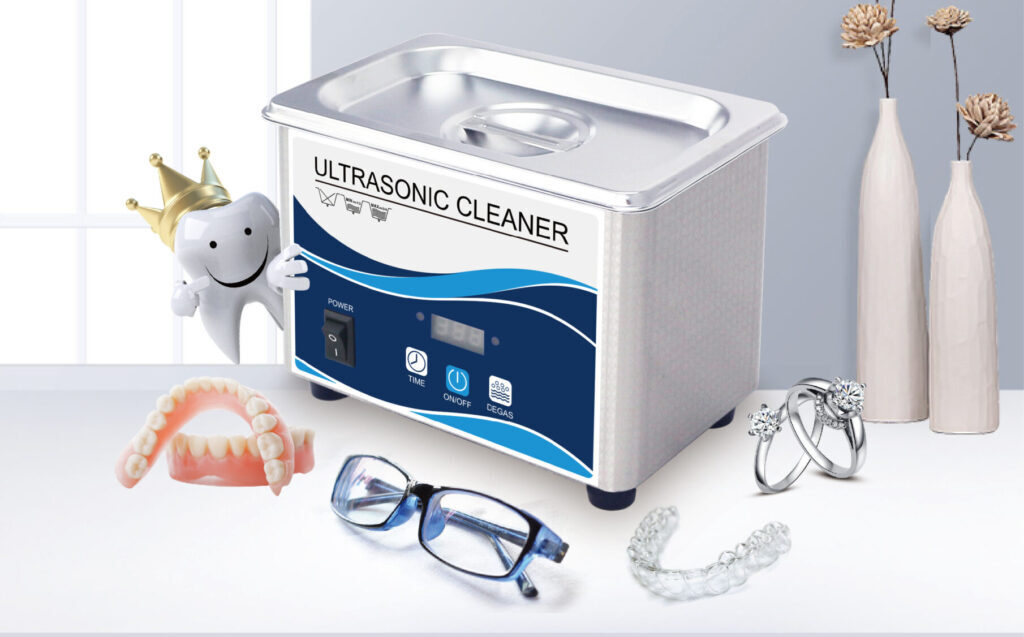
Granbo GA008 0.8L Ultrasonic Cleaner
Best Practices for Long-Term Jewelry Care After Ultrasonic Cleaning
Ultrasonic cleaning can restore brilliance, but preserving it requires thoughtful care after each session. The first step after cleaning is a detailed inspection. Hold the jewelry under a bright light or use a magnifying loupe to check for any loosened stones or compromised prongs. Even if no visible damage occurred, this routine builds awareness and prevents future problems.
After drying, store jewelry in a clean, soft-lined box or pouch. Never pile multiple pieces together—diamonds can scratch other gemstones or metals. For necklaces or bracelets, closing clasps before storage helps prevent tangling and reduces tension on the links.
Avoid harsh chemicals in everyday use. Exposure to chlorine in pools, bleach during cleaning, or even hairspray and perfume can gradually degrade metal finishes and build up residue on stones. Put on jewelry last when getting ready, and remove it before doing chores.
Schedule professional inspections at least once a year, especially for high-value or heirloom pieces. Jewelers can polish metal, tighten settings, and identify any hidden damage. This, combined with ultrasonic cleaning at home, offers a complete approach to care that maintains both the beauty and structural integrity of your jewelry.
Limit ultrasonic use to when it’s needed—not weekly, but rather once a month or every few weeks, depending on wear. For infrequently worn items, a gentle rinse or light cloth wipe may be all that’s required between ultrasonic sessions.
Innovations and the Future of Ultrasonic Jewelry Cleaning
Ultrasonic cleaning technology is evolving quickly. One exciting advancement is the rise of multi-frequency ultrasonic cleaners. These devices alternate between frequencies during operation, allowing for both deep cleaning and delicate treatment in the same cycle. Lower frequencies (like 25kHz) dislodge heavy grime, while higher frequencies (60kHz+) are gentle enough for fragile items. Some machines even include automatic switching for added versatility.
Another emerging trend is nanobubble cleaning, which uses ultra-fine bubbles—much smaller than standard cavitation bubbles—to reach microscopic contaminants. Originally developed for medical and semiconductor industries, this technology is now being tested for jewelry applications, particularly for antique or treated pieces.
Manufacturers are also prioritizing user safety and ease of use, with features like child locks, auto shutoff, and smart sensors that adjust cleaning based on the load inside. Digital touchscreens, mobile app integration, and preset jewelry modes are becoming more common in consumer units.
On the commercial side, jewelers are investing in ultrasonic systems with integrated steam and UV sterilization, enabling them to clean, polish, and sanitize in a single workflow. This trend is slowly trickling into the home market as well, with all-in-one devices that offer full-spectrum jewelry care.
Most importantly, the jewelry industry is placing greater emphasis on consumer education. Organizations like GIA and the American Gem Society are publishing more guides, charts, and videos to help consumers understand when and how to use ultrasonic cleaners safely. This empowers users to take better care of their own jewelry without fear or confusion.
Final Thoughts
Jewelry is more than adornment—it’s personal, symbolic, and often irreplaceable. Keeping it clean enhances not just its sparkle, but its emotional value and longevity. Ultrasonic cleaners offer a modern, efficient, and safe way to care for many types of jewelry, especially hard gemstones and durable metals.
When used correctly, these devices save time, extend brilliance, and reduce the need for frequent professional cleanings. While some types of jewelry require caution—such as treated or fragile pieces—the vast majority of everyday items can benefit from the power of ultrasonic cavitation.
For those who value both beauty and practicality, an ultrasonic cleaner is a smart addition to any jewelry care routine. Combined with mindful storage, safe daily habits, and periodic inspections, it ensures that your favorite pieces remain as stunning as the day they were first worn.
 Granbo Sonic
Granbo Sonic
